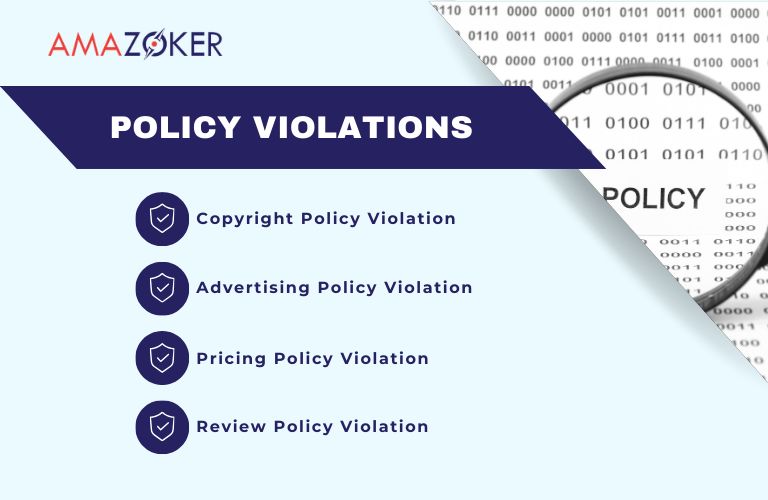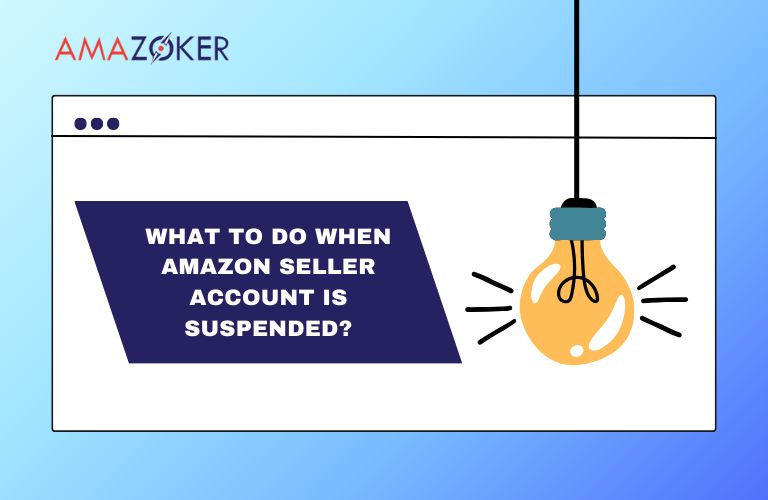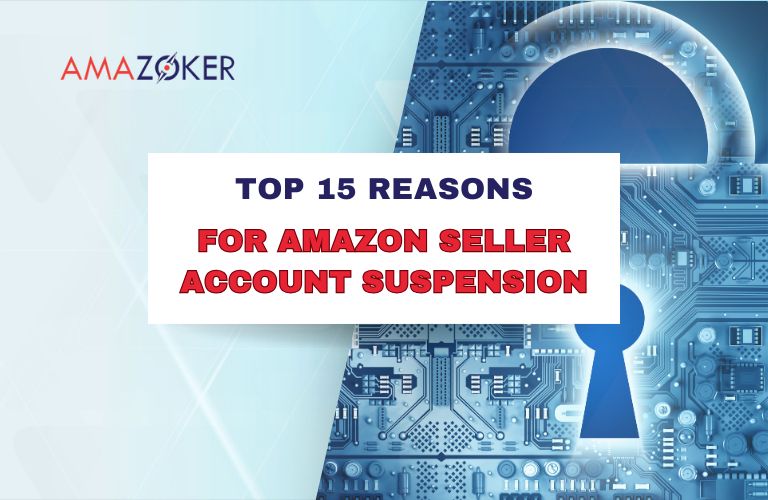Explore the top 15+ reasons behind Amazon Seller Account Suspension and learn what steps to take if your account faces suspension. Discover why Amazon suspends accounts, how to open new Amazon seller account after suspension and understand the crucial details from the amazon account suspension email.
Table of Contents
Policy Violations
Copyright Policy Violation: Sellers should be cautious when using product descriptions and images to ensure they align with copyright policies. Unauthorized use of copyrighted material may lead to account suspension. It is crucial to verify the authenticity of the content before listing products.
Advertising Policy Violation: Violating Amazon’s advertising policies, such as using misleading tactics or providing false information, can result in suspension. Sellers must adhere to advertising guidelines to maintain a trustworthy marketplace. To prevent such issues, sellers should regularly review and update their advertising content, ensuring it aligns with Amazon’s policies and promotes transparency.
Pricing Policy Violation: Sellers engaging in price manipulation, setting unreasonable prices, or using deceptive pricing strategies risk account suspension. Transparent and fair pricing practices are essential to uphold Amazon’s standards.
Review Policy Violation: Purchasing reviews or employing unethical strategies to boost reviews violates Amazon’s policies. The platform prioritizes genuine customer feedback, and any attempts to manipulate this system can lead to severe consequences.

There are 4 main types of policy violations that sellers need to be aware
Read more:
Customer Experience
Negative Customer Feedback: Accumulating a substantial amount of negative feedback adversely affects a seller’s reputation. Proactive customer service, addressing concerns, and ensuring a positive buying experience are crucial to prevent account suspension.
Non-Compliance with Delivery Principles: Timely and accurate deliveries are essential for a positive customer experience. Sellers failing to adhere to delivery commitments may face account suspension, emphasizing the importance of reliable shipping practices.
Excessive Customer Complaints: A high volume of customer complaints can trigger account suspension. Sellers should actively monitor and address customer concerns promptly to maintain a positive seller performance.
Product Issues
Prohibited Product Issues: Selling or advertising products prohibited by Amazon poses a significant risk of account suspension. Sellers must familiarize themselves with the list of prohibited items and ensure compliance.
Issues with Uniform Products: Ensuring the quality of products is of utmost importance. Products must conform to defined standards and align with the descriptions provided. Any deviations from these criteria may result in the suspension of the account, underscoring the significance of precise representation.

Selling prohibited products is a cause for account suspension
Account Integrity
Account Fraud: Engaging in fraudulent activities, such as purchasing reviews or using fake accounts, undermines the integrity of the Amazon marketplace. Maintaining account authenticity is vital to prevent suspension.
Incomplete or Inaccurate Account Information: Providing accurate and complete account information is a fundamental requirement. Any inaccuracies may lead to suspicion and potential suspension. Sellers must regularly review and update their account details.
Accepting Unreliable Payments: Using payment methods that are deemed unreliable can jeopardize a seller’s credibility. Ensuring the use of secure and reputable payment options is essential to prevent account suspension.
Operational Processes
Non-Compliance with Tax Regulations: Adhering to tax regulations is crucial for a sustainable business on Amazon. Failure to comply may lead to account suspension. Sellers should stay informed about tax obligations in their jurisdictions.
Accepting Incomplete Returns: Proper handling of return processes is essential. Failing to manage returns efficiently or accepting incomplete returns can lead to account suspension. Implementing effective return policies is vital for a seamless customer experience.
Business Relationships
Conflicts with partners or suppliers can have severe consequences for a seller’s account. Maintaining transparent and positive relationships with business partners is crucial to prevent account suspension. Clear communication and conflict resolution are key components.

Sellers must take immediate and strategic actions to address the issue
What to Do When Amazon Seller Account is Suspended
In the unfortunate event of account suspension, sellers must take immediate and strategic actions to address the issue:
Identifying the Cause
Thorough Analysis: Begin by thoroughly analyzing the communication from Amazon account suspension email that outlines the reason for the account suspension. Understanding the specific cause is vital for developing an effective action plan.
Reviewing Communication Channels: Examine emails, notifications, or any other communication channels from Amazon that provide insights into the suspension. Gather as much information as possible to address the root cause.
Contacting Amazon Support
Prompt Communication: Reach out to Amazon Support promptly. Clear and concise communication is key. Seek clarification on the reasons behind the suspension and inquire about the steps required to resolve the issue.
Documentation and Evidence: Prepare any necessary documentation or evidence that can support your case. This may include invoices, receipts, or any other relevant documents that demonstrate adherence to Amazon’s policies.
Rectifying Errors
Addressing Issues: Once the cause is identified, take immediate steps to rectify the issues. This may involve updating product listings, resolving customer complaints, or implementing changes to ensure compliance with Amazon’s policies.
Correcting Account Information: Review and update all account information to ensure accuracy. This includes business details, contact information, and any other data relevant to the operation of your Amazon store.
Developing an Improvement Plan
Preventive Measures: Formulate a comprehensive improvement plan to prevent similar issues in the future. This plan may include enhanced quality control processes, improved customer service strategies, and regular internal audits. Additionally, establishing clear communication channels with payment providers and staying abreast of industry trends will further fortify the seller’s ability to adapt to evolving payment standards and maintain a resilient payment infrastructure.
Policy Adherence: Emphasize strict adherence to Amazon’s policies and guidelines. Educate your team about the importance of compliance and regularly update them on any policy changes implemented by Amazon.
In conclusion, facing an Amazon Seller Account Suspension can be challenging, but proactive and strategic actions can pave the way for a swift resolution. By identifying the cause, contacting Amazon Support, rectifying errors, and developing a robust improvement plan, sellers can navigate the suspension process effectively. If you are looking for a service that can help you with Amazon seller complaints or account recovery, you may want to check out Amazoker. Amazoker is a company that provides Amazon appeal service, account suspension appeal, and other solutions for Amazon sellers. According to their website Amazoker.com, they claim to have a team of experts who can handle various types of Amazon seller issues




